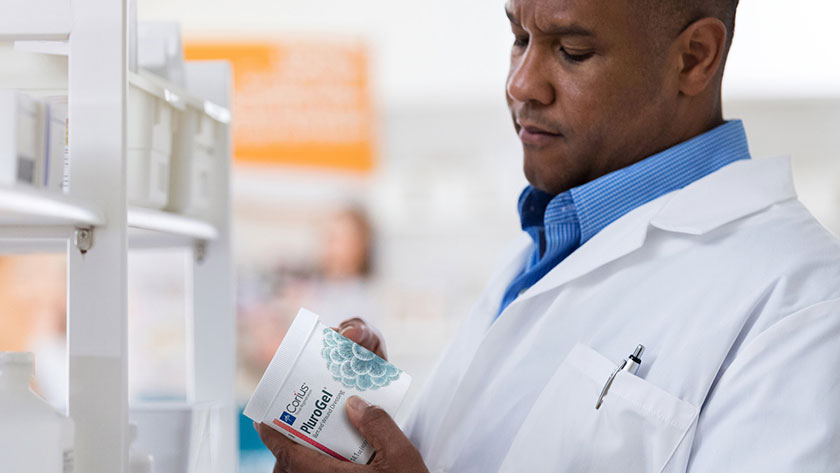3 tips to choosing wound care products that improve outcomes

This article is the second in a series where we explore the topic of wound care economics as it relates to clinical and financial outcomes.
The first article in our series on wound care economics defined the difference between the price of a product and the overall cost of a product. The price is distinguished as the literal unit price, but the cost includes many other indirect factors. One home healthcare system director we spoke with calls this the “fully loaded” cost, and it adds in everything from ease of application to wear time to patient satisfaction.
To jump-start our continuing conversations about price versus cost, we polled members of our Skin Health Advisory Board, asking them what they consider most important when it comes to wound care product selection.
A resounding 100% of the clinicians we polled said that clinical outcomes were their main consideration, but price per unit came in second. Clearly, there’s some push and pull.
Top 5 factors clinicians consider when choosing wound care products
- Clinical outcomes
- Price per unit
- Ease of educating frontline staff on usage
- Ease of clinician use
- Patient-reported satisfaction
We dug a little deeper to find out more about some of the obstacles to valuing product cost over price. Through our research, we learned that a holistic view of wound care economics may lead to better financial and clinical outcomes.
Here, we share valuable insights from clinicians and recommendations on how you can help achieve a healthy balance between choosing products based on price and its “fully loaded” cost.
First and foremost, our goal is to take care of patients.
Prioritize patient outcomes when choosing products
“I get the financial side, but first and foremost, our goal is to take care of patients,” says one of our Advisory Board members. “To pick a substandard product because it’s better price-wise will never be how I operate.”
It may seem obvious to consider clinical outcomes first when deciding on a skin health system of products, but it’s not always the reality. “Proving that positive outcomes usually produce money-savings in the long run is sometimes an abstract concept to certain people,” says Andy Wheeler, director of Therapy Specialty Services at VNA Health Group in New Jersey, and a Medline consultant.
That’s why it often falls on WOC nurses to advocate for this perspective. You can do that by participating in product selection discussions, educating staff, and tracking product problems and successes.
Take a seat at the decision-making table
Who should participate in wound care product buying decisions? You should. “WOC nurses need to know and be trained that the value analysis committee is something you really need to be a part of, because that’s where the decisions are going to be made,” urges one of our Advisory Board members.
“Ideally, a clinical person should be involved in those discussions to make sure the overall cost is being contextualized in a way that the healing costs and other elements are being considered,” agrees Kevin Y. Woo, Ph.D., RN, FAPWCA, assistant professor at Queen’s University School of Nursing, and a Medline consultant.

Dr. Woo explains that a wound care leader can offer 3 important perspectives:
1. Science behind the product
2. Patient satisfaction
3. Frontline nurse and patient compliance
Be sure to set realistic expectations to get what you need, even if it’s not always what you want. One of our Advisory Board members admits, “I’ve learned when to fight and when not to fight. There are times when maybe it’s not the product I would prefer, but the other product is adequate and isn’t going to harm the patient.”
Educate staff to standardize product usage and increase efficiency
Many of the clinicians we talked to brought up the importance of educating frontline nurses to help improve product cost-effectiveness.
For instance, knowing how much product to order can save money, particularly for home healthcare. “What it boils down to, is the field clinicians truly have to understand their products and their wear time to know how much they’ll need,” explains Michelle Mullins, System Director of Home Health at AMITA Health.* “If you change a product too early, then you’ve basically blown the whole reason you chose that product to begin with.”
We have to stay educated about new products to consider.
Unique situations came up during COVID-19, when many wound care clinics closed, and home health providers curtailed or limited their visits to patients’ homes. “If we weren’t looking at product wear-time efficiencies before, during COVID more than ever, we have to look at that to help decrease exposure,” says Katie Riley, Post Acute Chief Nursing Officer at Advocate Aurora Health Care.* “Using an appropriate product can extend time between visits or allow a video visit, so we can see progress and not necessarily be there to change a dressing.”
Like Andy Wheeler says, “If there’s not adoption by the end user, we’re just not going to be able to push the usage of it, despite it being a very useful and effective product.”
On the other hand, Wheeler has also experienced over-eagerness with certain products. “Some problems arise when you have to explain to staff that this product may be very good and very expensive, but it’s not appropriate all the time.” To help, Wheeler encourages education, not only on product application, but mechanism of action as well. “This goes such a long way to using products appropriately, which becomes cost-effective in the end.”
Another challenge can be educating nurses about times that warrant a shift away from a “favorite” product to a better one. “It all has to be very fluid,” Katie Riley says. “We have to stay educated about new products to consider.”
Track product challenges and successes
Once you’re at that decision-making table, be sure to have some product data to support your recommendations. One Advisory Board member says she keeps records of problems with products. This information can then be presented at a value analysis meeting to advocate for keeping or replacing the product.
Andy Wheeler suggests keeping notes on several data points:
- Cost of product
- Usage volume
- Positive outcomes
- How many wounds benefited
“But you have to be vigilant,” Wheeler says. “You have to keep an eye on it and calculate all that.”
The attention pays off, because misuse of a product can result in wasted product. At AMITA Health, Michelle Mullins says they conduct product reviews on a quarterly basis. “We look at our product usage and where we can improve, especially in terms of educating our frontline staff about whether they’re using the product the wrong way, which can drive our up our product costs.”
There’s no hard and fast rule when it comes to assessing wound care products for their overall “fully loaded” cost; many factors may change depending on the setting and circumstances. As a clinician and end-user of the products, be sure to look closely at clinical outcomes and share your expertise.
Key takeaway
The difference between price and cost of wound care products sometimes results in opposing goals, but with the right knowledge, you can help advocate for the right products. Ultimately, it goes back to a meaningful comment from Medline Vice President of Health Economics Margaret Halstead who says, “The most expensive therapy is the one that doesn’t work.”
*Michelle Mullins, Katie Riley and Stacy Phelps have received no financial benefit related to their contribution.
